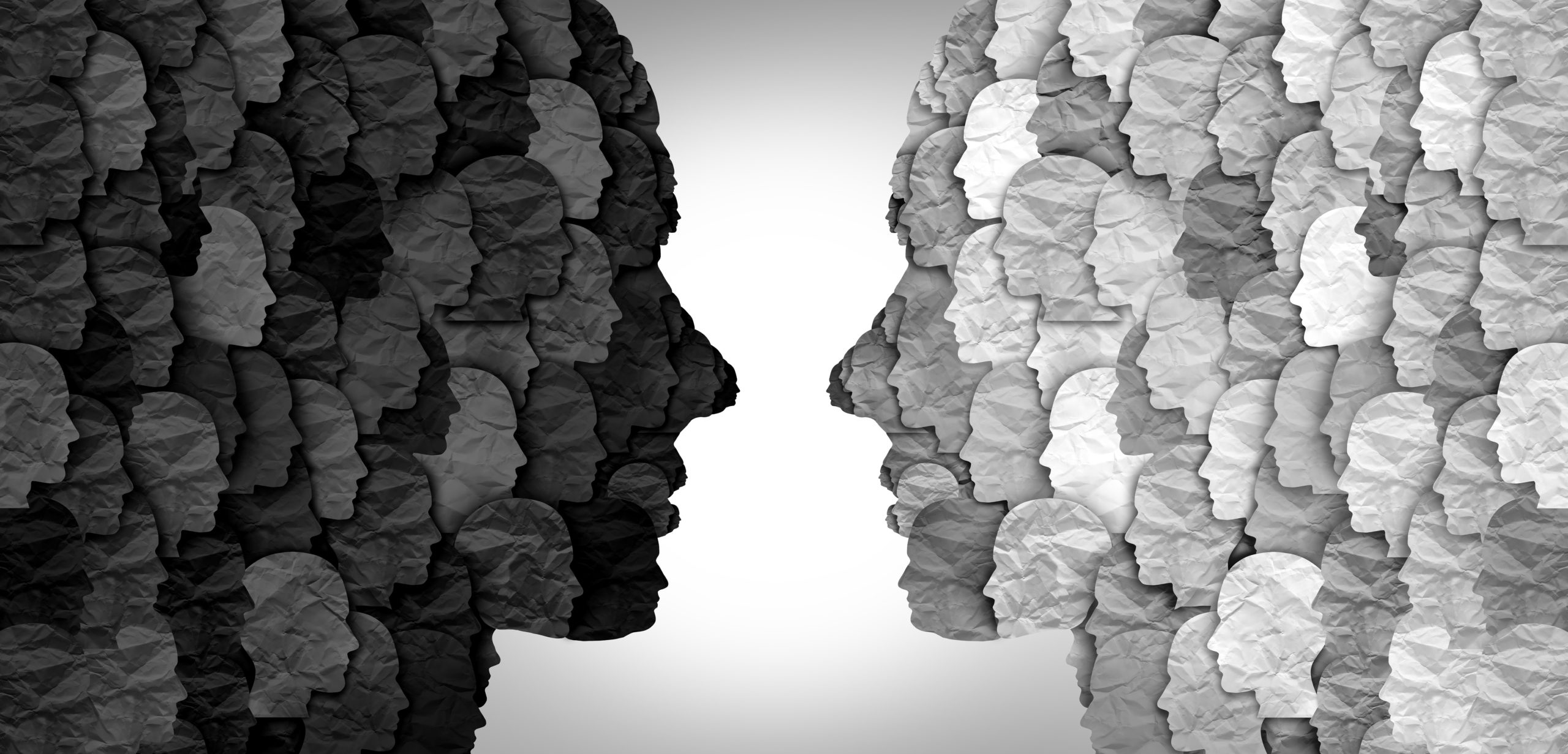Us Versus Them
We bring you Part 2 of this guest blog series authored by Laura Ligouri, executive director & founder of the neuroscience and psychology nonprofit, Mindbridge.

So much of what we think of as our identity is, for the most part, that which identifies us as being a member of a group. In order for there to be a “me,” there is a “you.” In order for there to be a “we,” there is a “them.” Much of the way in which we come to recognize (and internalize) the dividing lines that form the experience known as identity is steeped in the qualities and characteristics of the group we consider ourselves a part of. So why isn’t the scenario simply “us AND them” instead of the so prevalent “us VERSUS them”? To understand that, let me introduce you to Dr. Henri Tajfel.
Henri Tajfel is one of the original authors of social identity theory. To understand the theory, it’s best placed in the context of Dr. Tajfel’s life experiences. Henri Tajfel (originally named Hersz Mordche), born in Wloclawek, Poland on June 22, 1919, was of Polish-Jewish heritage. At the dawn of WWII, Tajfel was studying chemistry at the Sorbonne when he was called upon to serve in the French army. Later, he was captured by the Germans and, never having been discovered as a Jew, returned to his home to find that nearly all his friends and family had been killed.
This experience would leave an indelible mark on both Tajfel’s life and his career trajectory. He turned to the study of psychology, becoming fascinated with how one group could hate another group so much that perpetuating genocide could become not only reasonable, but something that a large population would actively support. At that time, the prevalent theory was that animosity between groups was primarily fueled by aggressive personalities in power. While personality, aggression, and “strong-man” psychology are certainly influential, Tajfel was skeptical. The range of conflict over history felt arbitrary and not one rooted simply in individual ideological differences. Tajfel suspected it was something more. And he was right.
In order to get at this “something more,” Tajfel conducted a series of famous experiments where he separated people into two groups. In these experiments, he sought to remove every salient difference such that no difference might remain. People were simply Group A or Group B. From there the original idea was to incrementally introduce small differences one at a time until a point was reached where people would start showing animosity towards each other. If he could find that point, he felt he could establish the baseline for prejudice, discrimination, and intergroup violence.
What he discovered was . . . there was no baseline.
Tajfel found that humans form groups easily, instinctively, and over any given point of difference, even insignificant ones. In psychology this became known as the “minimum group paradigm”—the minimum conditions necessary to form, adhere to, and promote group membership. What this also meant was that psychologically and neurobiologically a series of processes would be triggered.
Being part of a group (e.g., ethnicity, family, or activity) is often the source of pride and self-esteem. Evolutionarily, this sense of belonging contributed greatly to the likelihood of our survival and the opportunity to reproduce. However, to belong to an in-group by definition means that you are different from an out-group. This process of comparison (for there to be an “us,” there must be a “them”) has been neurobiologically encoded over hundreds of thousands of years of evolution history resulting in a system that views members of the in-group positively and members of the out-group with animosity.
We can imagine that at times of strife, famine, or disease, maintaining in-group cohesion was of utmost importance for the group to survive. As a result, out-group animosity and violence tend to increase during these times, even to our present day (e.g., the anti-Asian bias and hate crimes during the COVID-19 pandemic).
Our brains are wired to situate our group identity in the context and experience of “us versus them” as an evolutionary survival strategy.
So what are we to do?
Some organizations and religious leaders have suggested advocating for an acknowledgment of our collective humanity, rather than a focus on our individual forms of identity. In many ways, efforts to promote larger, more inclusive forms of categorization rather than a focus on individual identities have been useful. Others worry that carving a singular, overarching category erases individual identities and experiences. The most promising road ahead, and one that would more naturally fit our existing neurobiological architecture, is something of an amalgam between the two. Brown and Hewstone’s Mutual Intergroup Differential Model (2005) is quite the mouthful but provides a way to both honor our individual differences and experiences while providing a group category encompassing the whole.
By understanding the neurobiology of “us versus them” we begin to see the way it can promote animosity between groups. These processes are often at the root of problems we see every day, ranging from toxic polarization to how disinformation spreads. With an increased understanding of our neurobiology, we also gain the opportunity to choose a different way forward, one that augments the processes that bring us together, one brain at a time.







